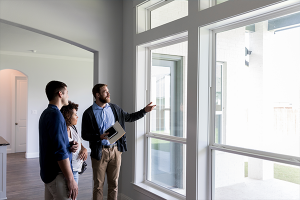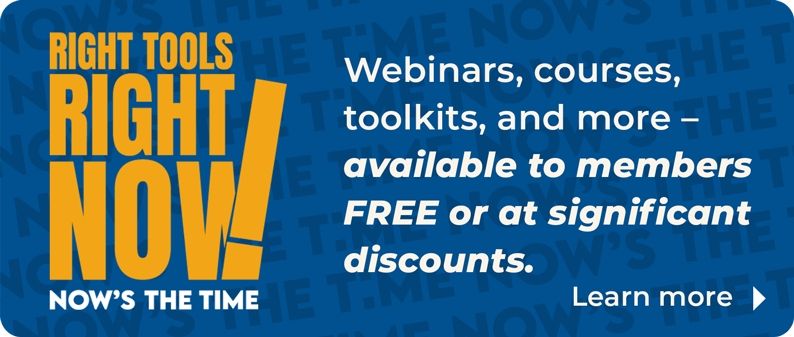References
NAR Library & Archives has already done the research for you. References (formerly Field Guides) offer links to articles, eBooks, websites, statistics, and more to provide a comprehensive overview of perspectives. EBSCO articles (E) are available only to NAR members and require a password.
Trails and Greenways: The Basics
A New 58-Mile Bike Trail Will Connect Chicago to Michigan (Crain’s Chicago Business, Oct. 26, 2022)
“The Marquette Greenway Trail Project will stretch 58 miles and connect Calumet Park on the city's Southeast Side to downtown New Buffalo, Mich. The project is funded in large part by a $17.8 million grant from the U.S. Department of Transportation to the Northwest Indiana Regional Planning Commission, in addition to millions of dollars in other federal, state, local and private grants.”
Benefits of Trails and Greenways (Rails to Trails)
The benefits of trails and greenways are numerous, some more tangible than others. According to Rails to Trails, trails and greenways support economic development, promote healthy living, provide environmental benefits and help preserve history and community.
What is a Greenway? (County of Berks, Pennsylvania)
"A greenway is a corridor of open space. Greenways vary greatly in scale, from narrow ribbons of green that run through urban, suburban, and rural areas to wider corridors that incorporate diverse natural, cultural and scenic features. They can incorporate both public and private property, and can be land- or water-based. They may follow old railways, canals, or ridge tops, or they may follow stream corridors, shorelines or wetlands, and include water trails for non-motorized craft."
Pros & Cons
Can Cities Combat “Green Gentrification”? (Bloomberg, Nov. 10, 2022)
“It’s an issue with deep roots in the US, where a history of redlining and segregation created wide gulfs in access to parks, recreational facilities and tree canopy coverage. Those amenities create value, and when added to existing neighborhoods, they tend to draw the attention of developers, who can market housing with a message focused on sustainability and wellness. Melissa Checker, an anthropologist at Queens College and the CUNY Graduate Center, coined the term “pernicious paradox” in 2011 to describe how neighborhoods are put in the position of saying no to a new amenity because of fears of displacement.”
Want Equity and Prosperity? Invest in Urban Public Spaces (Governing.com, Nov. 4, 2021)
“Our parks, streetscapes, community centers, trails and libraries are critical missing pieces of our public policy, even though investment in them can markedly advance equity and prosperity. As communities focus on recovery and economic growth, we should seize the urgent and unprecedented opportunity to prioritize these shared assets to deliver on social, economic and environmental goals.”
This Trail is Not Your Trail (Outside Magazine, May 9, 2020)While trails provide public spaces for neighbors to meet, gather, and in this case, run, they sometimes interfere with private property. In the foothills of the Rocky Mountains, a trail that connects public parks yet runs through private property has caused a great deal of strife between neighbors. How do we balance the importance of public, communal trails while respecting private property rights?
Trails, Greenways, and Your Property Value
Study Finds the “Green” in Montgomery County Open Spaces (The Mercury, Nov. 2, 2022)
“Ask most people what value they place on the preservation of open space and they will talk about the peace and beauty of the woods or an open field; the view it offers from their window or perhaps even the preservation of habitat for native species. But what about cold hard cash? As it turns out, open space in Montgomery County has a monetary and economic value in the billions of dollars (yes, “billions”) above and beyond what was paid for the land or the development rights — more than $4 billion, annually.”
The Impact of Trails and Greenways on Property Values (Parks & Recreation, Apr. 23, 2020)
“The emergence of much more advanced electronic technology in the late 1990s enabled these issues to be addressed by using more sophisticated research and statistical processes, and databases comprised of sales transactions. We identified 20 studies that investigated the impact of trails on residential property values. The results indicated that a small positive premium of between 3 percent and 5 percent was the most widespread outcome for a single-family home located next to a trail. However, there were outliers that suggested the premium might be as high as 15 percent in some cases, while in other contexts there may be a small negative impact.”
Multi-Use Trails And Greenways As Economic Development Engines (Economic Development Journal, Jan. 1, 2020) E
It is hard to quantify the economic effects of the outdoors, but a growing body of literature demonstrates “economic benefits through increased business spending and expenditures for capital projects and operations.” One of the things that make the economic element hard to measure is the cost of building trails, which can vary greatly.
Trail Effects on Neighborhoods: Home Value, Safety, Safety, Quality of Life (American Trails, Sep. 2000)
“Homeowners nationwide express the same concerns and fears about proposed trails in their neighborhoods. But studies in various parts of the United States seem to show that concerns about trails lowering property values and increasing crime are unfounded. In fact, trails have consistently been shown to increase (or have no effect on) property values, to have no measurable effect on public safety, and to have an overwhelming positive influence on the quality of life for trail neighbors as well as the larger community.”
Useful Websites
Bicycling and Walking in the United States: Benchmarking Progress (The League of American Bicyclists, 2018)
eBooks & Other Resources
Parks & Recreation System Planning: A New Approach for Creating Sustainable, Resilient Communities (eBook)
Cycling for Sustainable Cities: Urban and Industrial Environments (eBook)
Have an idea for a real estate topic? Send us your suggestions.
The inclusion of links on this page does not imply endorsement by the National Association of REALTORS®. NAR makes no representations about whether the content of any external sites which may be linked in this page complies with state or federal laws or regulations or with applicable NAR policies. These links are provided for your convenience only and you rely on them at your own risk.











